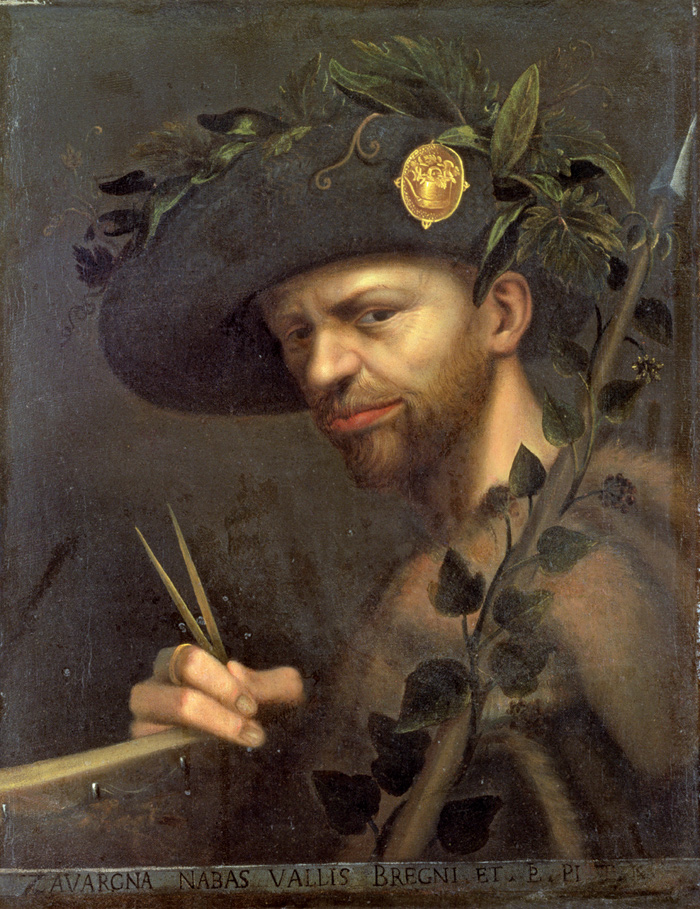“Whenever he began to paint, it seemed that Leonardo trembled, and he never finished any of the works he commenced because, so sublime was his idea of art, he saw faults even in the things that to others seemed miracles.”
Gian Paolo Lomazzo, 1590
Also known as Giovan or Giovanni, Lomazzo (1538-1592) was initially a painter, until his eyesight started to fail. Today his reputation is mainly based on him being a leading art historian and critic of the 16th Century, as well as on his respected writings on art theory. He is reputed to have had a large collection of Leonardo’s drawings, and spent years amassing every fact known about Leonardo at that time. Furthermore, Lomazzo, a Milanese, had access to information directly from Francesco Melzi, Leonardo’s protégé and heir, who allowed Lomazzo access to study Leonardo’s writings. Kemp and Pallanti emphasise Lomazzo’s reliability.
Lomazzo first refers to Mona Lisa in his Book of Dreams [1563]; largely copying from Vasari, who was still alive. He next refers to Mona Lisa in 1584, in his ‘Trattato’“Fra quali si veggono quelli di mano di Leonardo, ornate a guisa di primavera, come il ritratto della Gioconda, e di Mona Lisa, ne’ quali ha espresso tra le altre parti mara Vigliosamente … etc.” “… like the portrait of La Gioconda, AND of Mona Lisa, in which [of both – ‘ne’ quali’] he has expressed most marvelously … etc.”
This passage has been cited as evidence that Leonardo painted two (more or less identical) portraits of ‘Mona Lisa’.
The syntax, the conjunction ‘AND’, the plural ‘quali’, the reference to a painting of a ‘Gioconda’, and the context leave little doubt that in 1584 Lomazzo makes it clear that ‘Mona Lisa’ and ‘La Gioconda’ were two separate portraits, as is confirmed by the plural ‘ritratti’ in the index of the Treatise: “Gioconda, e Mona Lisa, con auuertenze de I suoi ritratti.”
In 1973, Professor Carlo Pedretti acknowledged that Lomazzo intended to refer to two portraits. Professor Carlo Vecce, in an interview in the publication Gioia, states that: “… to Lomazzo, Melzi talks of portraits of the ‘Gioconda’ and of ‘Monna Lisa’, as if they were two distinct works.”
Lomazzo continues “ … e le faccie delle lor donne amate in vaghissima maniera abbellite…”. Here he specifically links the two paintings together, as both having similar treatment, as well as sharing the same beautiful smile.
In addition, according to Jack Greenstein in Leonardo, Mona Lisa and “La Gioconda”: Reviewing the Evidence, 2004: “…Lomazzo’s knowledge of Italian is unimpeached, and the passage in the ‘Treatise’ shows that a competent, well-informed speaker of Renaissance Italian thought that the title ‘La Gioconda’ did not refer to ‘Mona Lisa’.”
Lomazzo, who sourced his information quite independently of Vasari, is considered as one of the most reliable chroniclers of his time. He dedicated his Trattato of 1584 to Charles Emmanuel I, Duke of Savoy, a great patron of the arts, and an admirer of Leonardo’s work. Certainly Lomazzo would not have written this statement about the ‘Mona Lisa’ and the ‘Gioconda’ if he were uncertain of the facts. That so much can hinge on the historical record of a single phrase may be unusual, but the fact is established that Lomazzo made it clear that there were two separate paintings.

Gian Paolo Lomazzo, self-portrait